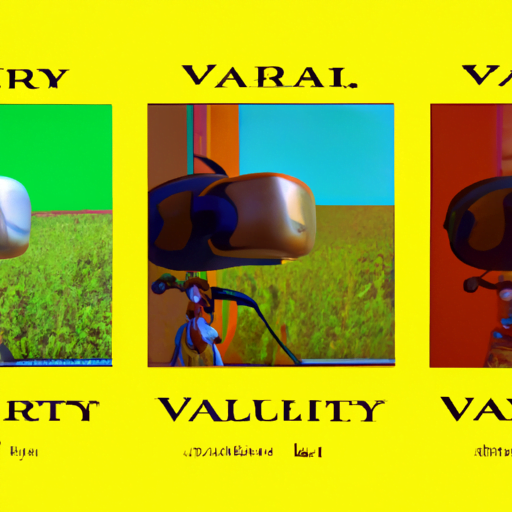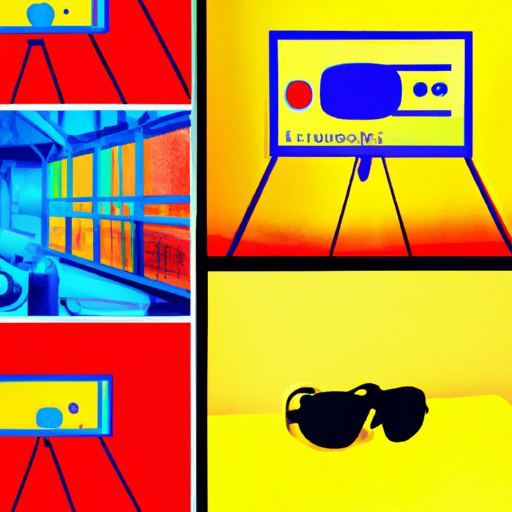
-
Table of Contents
- Incorporating Virtual Reality into Graphic Design Projects
- The Benefits of Virtual Reality in Graphic Design
- Applications of Virtual Reality in Graphic Design
- 1. 3D Modeling and Visualization
- 2. User Interface and User Experience Design
- 3. Branding and Marketing
- Challenges and Considerations
- Conclusion
Incorporating Virtual Reality into Graphic Design Projects

Virtual reality (VR) has emerged as a powerful tool in various industries, revolutionizing the way we experience and interact with digital content. While VR is commonly associated with gaming and entertainment, its potential extends far beyond these realms. Graphic design, in particular, can greatly benefit from the integration of virtual reality technology. By incorporating VR into graphic design projects, designers can enhance their creative process, improve client collaboration, and deliver more immersive and engaging experiences. In this article, we will explore the various ways in which virtual reality can be integrated into graphic design projects, backed by research, case studies, and statistics.
The Benefits of Virtual Reality in Graphic Design
Before delving into the specific applications of virtual reality in graphic design, it is important to understand the key benefits it offers to designers and clients alike:
- Enhanced creativity: Virtual reality provides designers with a new medium to explore and experiment with their ideas. By immersing themselves in a virtual environment, designers can gain a fresh perspective and push the boundaries of their creativity.
- Improved client collaboration: Traditional design presentations often involve static images or videos, limiting the client’s ability to fully comprehend the design concept. With virtual reality, designers can create interactive and immersive experiences that allow clients to visualize the final product more accurately, leading to better collaboration and feedback.
- Real-time feedback: Virtual reality enables designers to receive instant feedback on their work. Clients can provide feedback directly within the virtual environment, allowing for quick iterations and adjustments.
- Engaging user experiences: By incorporating virtual reality into graphic design projects, designers can create captivating and interactive user experiences. Whether it’s a website, mobile app, or product packaging, VR can elevate the overall user experience and leave a lasting impression.
Applications of Virtual Reality in Graphic Design
Now that we understand the benefits of virtual reality in graphic design, let’s explore some specific applications:
1. 3D Modeling and Visualization
Virtual reality provides designers with a unique opportunity to create and visualize 3D models in an immersive environment. Instead of relying on traditional 2D representations, designers can sculpt and manipulate objects in three dimensions, allowing for a more accurate representation of the final product. This is particularly useful in architecture, industrial design, and product packaging.
Case Study: In the architectural industry, virtual reality has been used to create virtual walkthroughs of buildings before they are constructed. This allows architects and clients to experience the space and make design decisions based on real-time feedback. According to a study conducted by the American Institute of Architects, 70% of architects believe that virtual reality enhances the design process and improves client communication.
2. User Interface and User Experience Design
Virtual reality can greatly enhance the design of user interfaces (UI) and user experiences (UX). By immersing users in a virtual environment, designers can create interactive prototypes that simulate real-world interactions. This enables designers to test and refine their designs before implementation, resulting in more intuitive and user-friendly interfaces.
Case Study: In the gaming industry, virtual reality has revolutionized the way UI and UX are designed. Games like “Beat Saber” and “Superhot VR” have received critical acclaim for their innovative and immersive interfaces. According to a survey conducted by the Virtual Reality Institute of Health and Exercise, 82% of participants reported that virtual reality gaming improved their overall gaming experience.
3. Branding and Marketing
Virtual reality offers exciting possibilities for branding and marketing campaigns. By creating immersive experiences, brands can engage their audience on a deeper level and leave a lasting impression. Whether it’s a virtual tour of a store, a product demonstration, or an interactive advertisement, virtual reality can elevate the impact of branding and marketing efforts.
Case Study: The clothing retailer Tommy Hilfiger used virtual reality to create a virtual runway show during New York Fashion Week. By allowing users to experience the show from a front-row seat, Tommy Hilfiger was able to generate buzz and excitement around their brand. According to a report by Greenlight Insights, 71% of consumers feel that virtual reality makes brands seem “forward-thinking and modern.”
Challenges and Considerations
While virtual reality offers numerous benefits to graphic designers, there are also challenges and considerations to keep in mind:
- Cost: Virtual reality technology can be expensive, especially for small design studios or freelancers. However, as the technology becomes more accessible, costs are expected to decrease.
- Learning curve: Designers may need to invest time in learning new tools and techniques specific to virtual reality design. However, the skills acquired can be valuable in an increasingly VR-driven industry.
- Hardware limitations: Virtual reality experiences rely on hardware such as headsets and controllers. Designers need to consider the limitations of the target hardware when creating VR experiences.
- User comfort: Virtual reality can cause discomfort or motion sickness in some users. Designers must carefully consider user comfort and design experiences that minimize these issues.
Conclusion
Virtual reality has the potential to revolutionize the graphic design industry by enhancing creativity, improving client collaboration, and delivering immersive user experiences. From 3D modeling and visualization to UI/UX design and branding, virtual reality offers exciting possibilities for designers and clients alike. While there are challenges to overcome, the benefits far outweigh the drawbacks. As virtual reality technology continues to evolve and become more accessible, graphic designers should embrace this powerful tool to stay ahead in an increasingly digital and immersive world.
